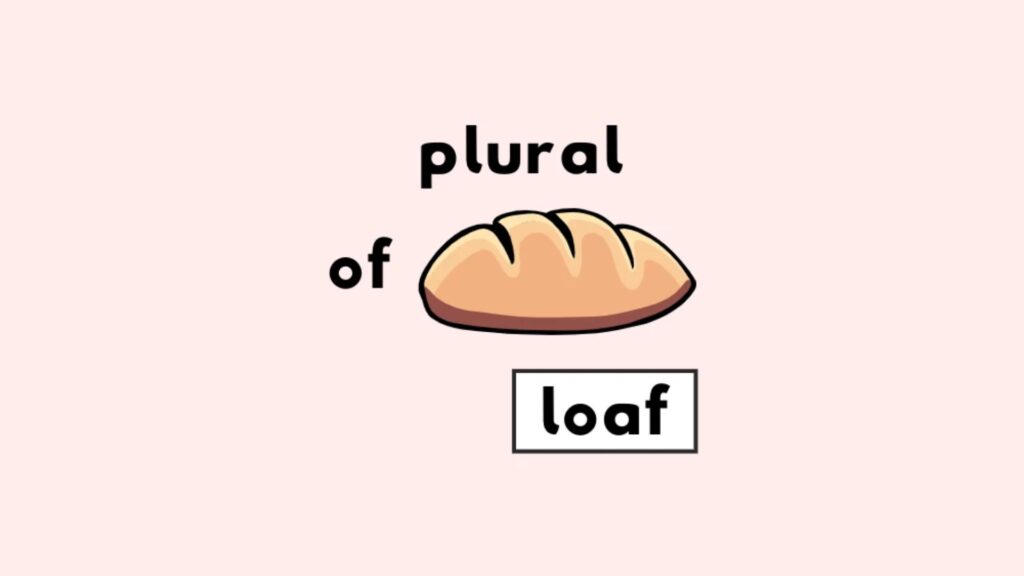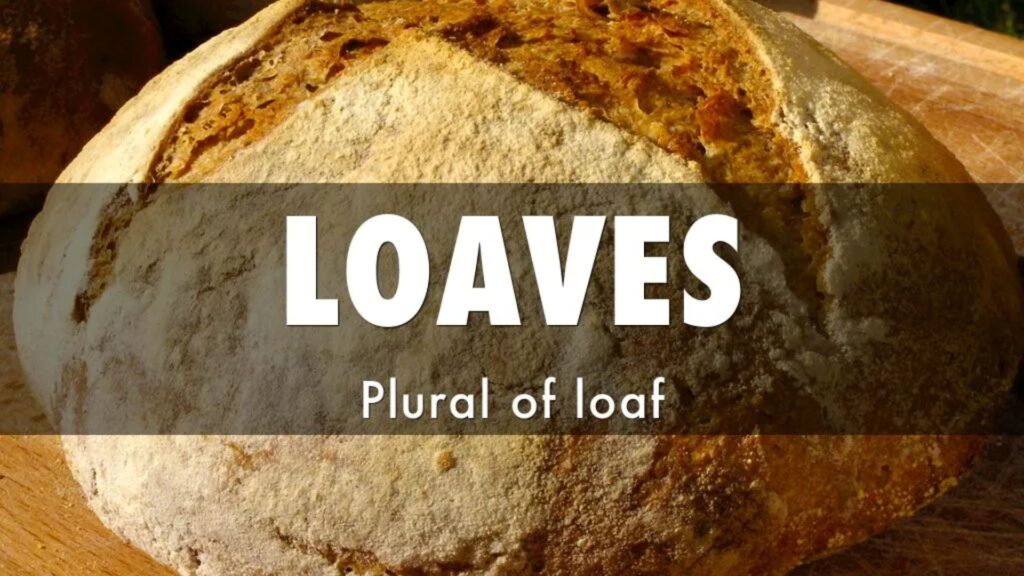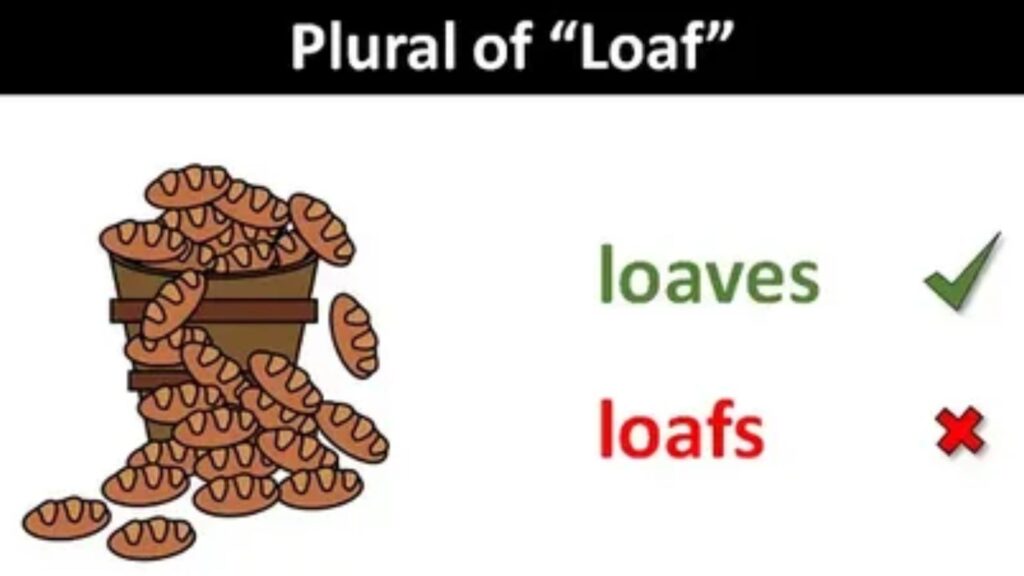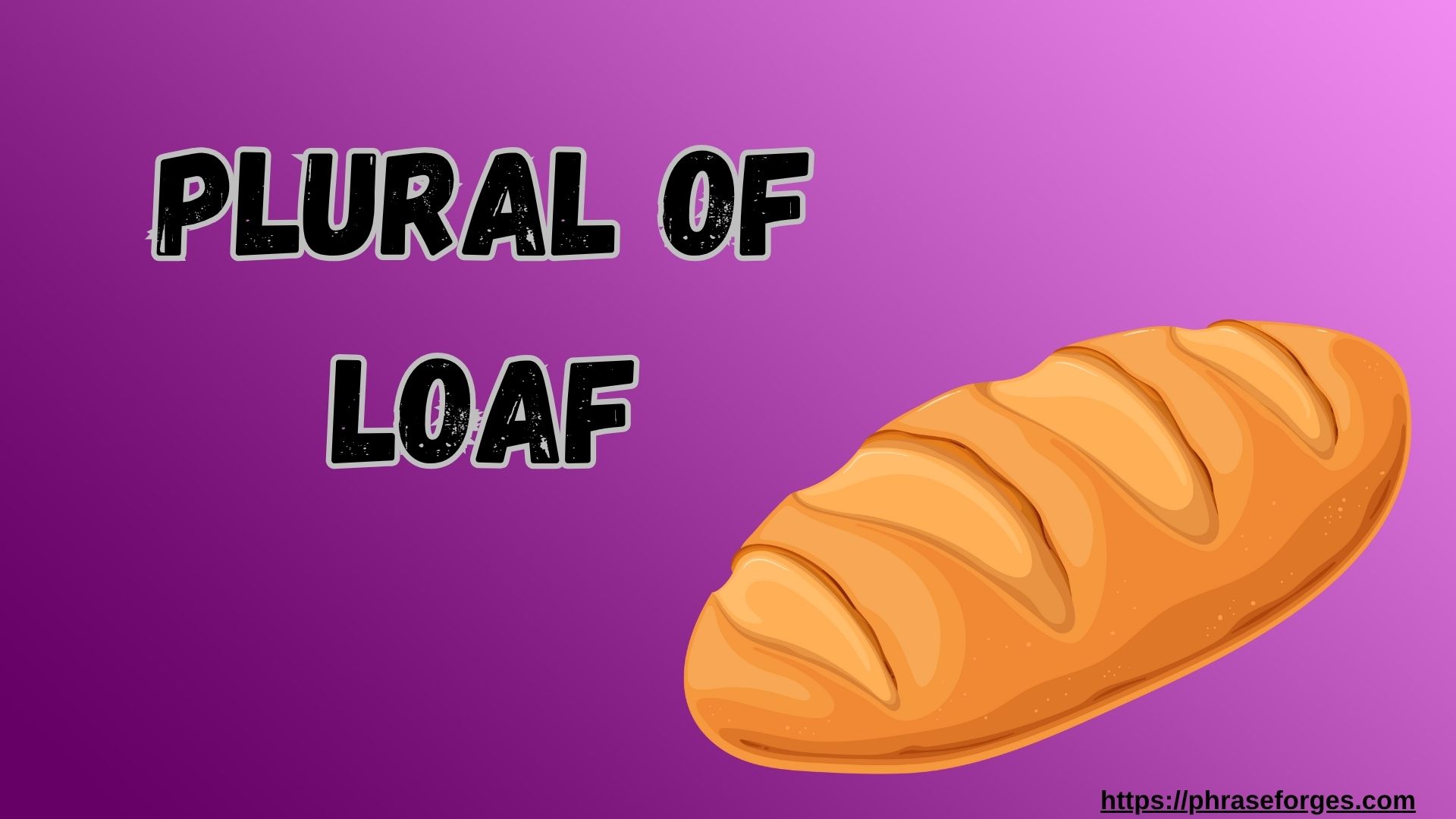Ever stared at a recipe and paused at the word “loafs”? Or maybe you saw “loaves” and second-guessed yourself? You’re not alone. Many English learners and even native speakers wonder about the correct plural of loaf.
So, is it loafs or loaves?
Let’s unravel this breaded grammar knot.
Loaf Plural Form in English

The word loaf refers to a shaped mass of bread, usually baked in one piece. But when you want to talk about more than one?
👉 You say loaves.
Not loafs.
Why?
Because loaf is an irregular plural noun, specifically one that ends in -f. And like other similar words knife → knives, wolf → wolves, shelf → shelves it follows a pattern where the “f” becomes “v” and we add -es.
So:
Loaf → Loaves
(Not loafs ❌)
This change isn’t random. It’s rooted in English morphological patterns, many of which trace back to Old English and Germanic languages.
Clear Rules & Patterns
When pluralizing nouns ending in -f or -fe, here’s a quick cheat sheet:
🔡 Bulleted Rules with Do’s/Don’ts
- ✅ If the word ends in -f or -fe and refers to something more traditional (like tools, animals, or objects), it often becomes -ves in plural:
- Loaf → Loaves
- Knife → Knives
- Wife → Wives
- Calf → Calves
- ❌ Don’t just add an “s” to make loafs it’s incorrect in standard English.
- ⚠️ But not all f/fe nouns follow this rule! For example:
- Roof → Roofs
- Chef → Chefs
- Cliff → Cliffs
So how do you know?
You memorize the exceptions or use a dictionary definition or grammar guide to double-check.
Multiple Example Sentences

Let’s look at the word “loaf” in action both singular and plural:
- Singular:
I baked a fresh loaf of sourdough yesterday.
Each student brought a loaf of white bread for the fundraiser. - Plural:
I bought three loaves of rye bread for the picnic.
The bakery sells artisan loaves every morning.
Need a more practical context? Here’s how it could appear in real life.
📧 Scenario Email #1 – Formal Work Message
Subject: Bread Order for the Event
Hi Marissa,
Just confirming your request: we’ll deliver 10 loaves of sourdough and 5 loaves of gluten-free multigrain by noon on Friday.
Let me know if you’d like to add a few extra loaves for backup.
Thanks,
Ethan
Hearth & Crust Bakery
📩 Scenario Email #2 – Friendly Invitation
Subject: Homemade Bread for Sunday Brunch 🥖
Hey Liam,
Hope you’re ready to carb-load. I’m baking two loaves of olive focaccia and a loaf of cinnamon swirl just in case we want something sweet.
Bring butter or better yet, Nutella.
See you Sunday,
Jules
Before/After Examples in Everyday and Formal Contexts
| Incorrect Sentence | Correct Version |
|---|---|
| I brought two loafs of bread. | I brought two loaves of bread. |
| She baked five banana loafs. | She baked five banana loaves. |
| The bakery has many fresh loafs. | The bakery has many fresh loaves. |
As you can see, loafs isn’t standard English. It may appear in typos or casual speech, but it isn’t grammatically correct.
Common Mistakes & Fixes
Let’s clean up some easy-to-make errors:
- Mistake: Saying “loafs of bread” out loud in conversation.
✅ Fix: Practice the word loaves. (It rhymes with “stoves.”) - Mistake: Assuming all words ending in “-f” take “-s.”
✅ Fix: Learn the pattern of f → ves transformation. - Mistake: Overcorrecting with words that don’t change (e.g., “rooves” instead of “roofs”).
✅ Fix: Stick with trusted grammar sources or usage examples.
Grammar Tip Loaf: Why the Change?
The reason “loaf” becomes “loaves” has roots in Proto-Germanic languages.
The word “loaf” comes from *Proto-Germanic khlaibuz, which also gave rise to:
- Old Norse: hleifr
- Old High German: hleib
- Gothic: hlaifs
- Modern German: Laib (meaning “loaf”)
In these languages, pluralization often involved vowel or consonant changes, part of a process called I-mutation. That’s why today we get strange-looking but totally correct plurals like:
- Loaf → Loaves
- Foot → Feet
- Man → Men
The English language is full of these fascinating morphological changes.
Quick Reference Table
| Singular | Plural | Type | Pattern |
|---|---|---|---|
| Loaf | Loaves | Irregular plural noun | f → ves transformation |
| Knife | Knives | Irregular plural noun | f → ves transformation |
| Roof | Roofs | Regular plural noun | Adds “s” only |
| Bun | Buns | Regular plural noun | Adds “s” only |
Loaf Plural Mistake: Why It Matters

Using the wrong plural might seem harmless, but in formal writing or on a bakery menu it can look careless.
Picture this:
Menu Special: Fresh baked banana loafs
❌ Feels off, doesn’t it?
Now try:
Menu Special: Fresh baked banana loaves
✅ Feels correct, and more professional.
Bonus: Plural Rules for F-Ending Words
Not sure when to use -s vs -ves? Here’s a mini chart:
| Ends in -f / -fe | Plural Form | Examples |
|---|---|---|
| Change to -ves | Irregular | loaf → loaves, knife → knives |
| Add -s | Regular | chef → chefs, roof → roofs |
| Both forms accepted | Variable | scarf → scarves/scarfs |
Final Thoughts: Loaf vs Loaves
To wrap it up there’s no contest.
The correct plural of loaf is loaves, not loafs. It’s an irregular plural noun, shaped by centuries of linguistic evolution and the f → ves transformation rule.
Whenever you’re writing about bread or even using “loaf” metaphorically (like “loafing around”) make sure your grammar is as polished as your sourdough crust.
Let your grammar rise like dough soft inside, crisp on the outside, and always accurate.
Ready to test your bread-based grammar knowledge in a recipe, email, or class discussion? Go forth and pluralize like a pro.

